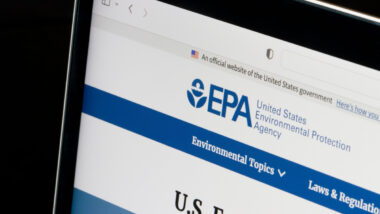Top Class Actions’s website and social media posts use affiliate links. If you make a purchase using such links, we may receive a commission, but it will not result in any additional charges to you. Please review our Affiliate Link Disclosure for more information.
Sexual Assault Overview
Sexual assault can take many different forms. The term “sexual assault” includes rape, but also includes other unwanted sexual physical contact. Unwelcome kissing, rubbing, groping or other forceful sexual touching are forms of sexual assault, too, as well as forcing a victim to perform sexual acts and attempted rape. All of these undesired forms of physical contact are considered criminal acts of sexual assault.
While sexual assault varies in form, it is important to remember that sexual assault is never the fault of the victim.
In 2012, the FBI revised the definition of rape to be gender neutral, indicating the understanding that any human being can be a victim of assault. Today, rape is legally defined by the FBI as “penetration, no matter how slight, of the vagina or anus with any body part or object, or oral penetration by a sex organ of another person, without the consent of the victim.”
What’s the Difference Between Sexual Harassment and Sexual Assault?
Sexually charged comments, advances, or actions that cause an unreasonable interference with an employee’s work performance or that which creates an intimidating, hostile or offensive work environment are considered sexual harassment. Requests for sexual favors, verbal or physical conduct of a sexual nature and unwelcome sexual advances are all overt displays of sexual harassing behavior.
In many instances, sexual harassment may not involve a sexual advance at all. Instead, the perpetrator commits gender harassment by insulting people based on gender. Sexually explicit pictures or conversations, objectifying commentary regarding bodies or gender-specific degrading remarks can lead to a hostile environment.
Sexual harassment may also take the form of visually displaying explicit or suggestive materials.
The U.S. Equal Employment Opportunity Commission notes that sexual harassment is a type of sex discrimination that violates Title VII of the Civil Rights Act of 1964.
Sexual assault occurs when sexual contact or behavior takes place without the victim providing explicit consent for such actions.
Rape, attempted rape, unwanted fondling, or forcing a victim to perform sexually upon the perpetrator are all forms of sexual assault.
The perpetrator may ignore the victim’s pleas of “no” or “stop” or aggressively overpower the victim by holding the person down. A perpetrator also may rape a person who is not capable of providing consent due to being drunk, unconscious, asleep, mentally incapacitated or physically incapacitated. The rapist also may threaten the victim with a weapon. Consent may also become tricky when it comes to people with a significant power imbalance, such as one person in a position of authority or power over the other. Even without threats of violence, there may be an implicit threat involved.
Most victims know their perpetrators, according to the Rape, Abuse & Incest National Network (RAINN). And in eight out of 10 sexual assaults, the victim knows the abuser.
The terms “date rape” and “acquaintance rape” mean the people involved may have been on a date, but also can include rape by a classmate, neighbor, a friend’s spouse, a teacher or someone in any other role in the life of the victim.
Stranger rape does still exist, though, and RAINN identifies stranger rape in three categories. The blitz sexual assault occurs when a stranger surprises the victim with a quick and brutal attack that almost always happens in a dark area at night out in public. The contact sexual assault occurs when the stranger approaches the victim to try to lure the person into a car or into another geographical area where the perpetrator has full control of the situation. The home invasion sexual assault occurs when the stranger breaks into the victim’s living quarters and attacks the victim.
Sexual Assault Laws
A number of sexual assault laws help survivors of sexual violence find justice.
- Title IX is a federal statute that protects people from discrimination based on sex in any educational program or any other activity that the U.S. federal government helps fund. Title IX includes the areas of sexual harassment and disciplinary action. However, Title IX has undergone recent changes under Betsy DeVos that reportedly give power to accused students rather than survivors.
- The Victims of Crime Act assists victims with the financial costs of the crime, including counseling services, medical bills and lost wages.
- The SAFER Act works to ensure the backlog of DNA evidence needed to prove sexual assault cases against perpetrators is properly audited and tested in order to bring the database up to date.
- The Debbie Smith Act helps by providing resources to process evidence, and as a result, assists in the reduction and eventual elimination of the backlog of unanalyzed DNA evidence.
At the state level, several states have recently updated their sexual abuse laws to allow survivors of childhood sexual abuse more time to pursue litigation, including opening lookback windows for those with previously expired claims to come forward. Survivors in California, for instance, have until Dec. 31, 2022 to file within the lookback window.
These updated sexual abuse laws are a massive win for abuse and assault survivors, who are too often forgotten and unheard. In many states, it is easier than ever before to seek justice, even years after the abuse itself. Lawsuits are being filed against organizations that may have allowed the abuse to occur along with the perpetrators themselves.
Class action lawsuits alleging sexual harassment or sexual assault have garnered awards in the millions of dollars as the perpetrators are held responsible for their crimes. Lawsuits have been filed within the Catholic Church, the Southern Baptist Convention, and many other religious organizations, youth organizations, schools, sports teams, and more.
Joining a free sexual assault class action lawsuit investigation can help survivors pursue both compensation and justice.
Filing a lawsuit can be a daunting prospect, so Top Class Actions has laid the groundwork for you by connecting you with an experienced attorney. Consulting an attorney can help you determine if you have a claim, navigate the complexities of litigation, and maximize your potential compensation.















